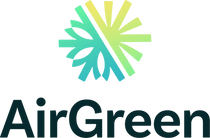Indoor air quality is becoming an increasingly important concern, especially in densely populated areas like Montréal, Laval, Longueuil, the North Shore and South Shore, where modern homes are increasingly airtight to enhance energy efficiency. While this airtightness has thermal benefits, it presents a major challenge: air renewal. This is where heat recovery ventilators (HRVs) come into play. But one often overlooked component in these systems plays a crucial role: HRV filters.
The importance of HRV filters in an HVAC system
HRV filters are designed to purify the air entering your home while preserving the efficiency of the ventilation unit. They trap dust, pollen, fine particles, mold spores, and even certain allergens. In a climate as extreme as Québec’s, where homes remain sealed shut for many months of the year, these filters are essential for maintaining healthy indoor air.
At AirGreen, we’ve found that many of our customers don’t realize just how much these filters impact not only their health but also the energy performance of their ventilation system.
How do filters work in an HRV?
An HRV (Heat Recovery Ventilator) pulls stale indoor air out while bringing in fresh air from outside. Before that outside air enters your living space, it passes through one or more filters. These serve to:
-
Filter out outdoor pollutants such as pollen, dust, fine particles, etc.
-
Protect the heat exchange core by preventing dirt buildup on internal components.
-
Reduce mechanical maintenance, keeping the system cleaner for longer.
Types of HRV filters: choosing wisely based on your environment
There are several types of HRV filters, each suited to different needs. In Montréal and surrounding areas, your choice will depend on your location (urban, suburban, rural) and your specific concerns (allergies, pollution, smoke, etc.).
Basic filters (synthetic fibers or washable foam)
-
Used by default in most residential units.
-
Protect the unit, but offer moderate efficiency against fine particles.
MERV filters (Minimum Efficiency Reporting Value)
-
More efficient at capturing small particles (between 3 and 10 microns).
-
Recommended for homes in urban or industrial areas.
HEPA filters
-
Offer hospital-grade filtration.
-
Rare in residential HRV systems due to their resistance to airflow, but can be considered for homes with specific needs (asthma, severe allergies).
Filter maintenance: a neglected necessity
One of the recurring issues we encounter during our HVAC maintenance visits in Montréal, Laval, and Longueuil is clogged HRV filters. A blocked filter:
-
Reduces airflow.
-
Affects indoor air quality.
-
Forces the HRV to work harder, increasing energy consumption.
-
Can lead to moisture buildup and mold in the ductwork.
At AirGreen, we recommend:
-
Checking filters every 3 months.
-
Replacing or cleaning them (depending on type) at least twice a year, and more often if you have pets or live in a densely urban area.
Case study: HRV installation and maintenance in Boucherville (South Shore)
Recently, our team installed a Venmar AVS® N Series HRV system with MERV 8 filters in a single-family home in Boucherville, on the South Shore. The homeowner suffered from severe seasonal allergies, and the indoor air had become unbreathable during spring. We recommended upgrading to high-quality filters, suited to the local pollen density.
A few months after installation, during our follow-up HVAC maintenance visit, we observed that the filters had captured an impressive amount of pollutants. After replacement, the client immediately noticed an improvement in respiratory comfort.
Why do so many people neglect these filters?
The answer is simple: filters are invisible. Unlike a wall-mounted air conditioner or heat pump, whose operation is immediately noticeable, HRV filters quietly do their job behind the scenes. And yet, they’re just as essential. Ignoring their maintenance is like leaving a window open to pollution in an otherwise sealed system.
Filters and grants: an indirect but important connection
While filters themselves are not subsidized by programs like LogisVert or Rénoclimat, proper maintenance contributes to the overall energy efficiency of your HVAC system. A well-maintained system runs more efficiently, which is a key criterion for obtaining certain energy grants in Québec.
Our recommendations for homeowners in Montréal and surrounding areas
-
Identify the type of filter used in your HRV. Check the manual or ask our team.
-
Set a regular maintenance schedule (ideally every three months).
-
Invest in quality filters, especially if you're sensitive to allergens or pollution.
-
Call in the experts, like AirGreen, for annual full inspections.
Why trust AirGreen?
At AirGreen, we combine technical expertise, personalized service, and in-depth knowledge of the local climate. Our teams regularly work on installation, replacement, and maintenance of HRV systems in Montréal, Laval, Longueuil, as well as the North Shore and South Shore. Each client receives a tailor-made solution, adapted to their environment and real needs.
Conclusion
HRV filters, while they may seem secondary, play a central role in your home’s health and your HVAC system’s longevity. Regular maintenance and thoughtful selection of filters are simple yet crucial steps to improving indoor air quality, reducing energy costs, and ensuring optimal performance of your heat recovery ventilator. At AirGreen, attention to detail is part of who we are. Trust us with your comfort – we’ll all breathe easier together.

